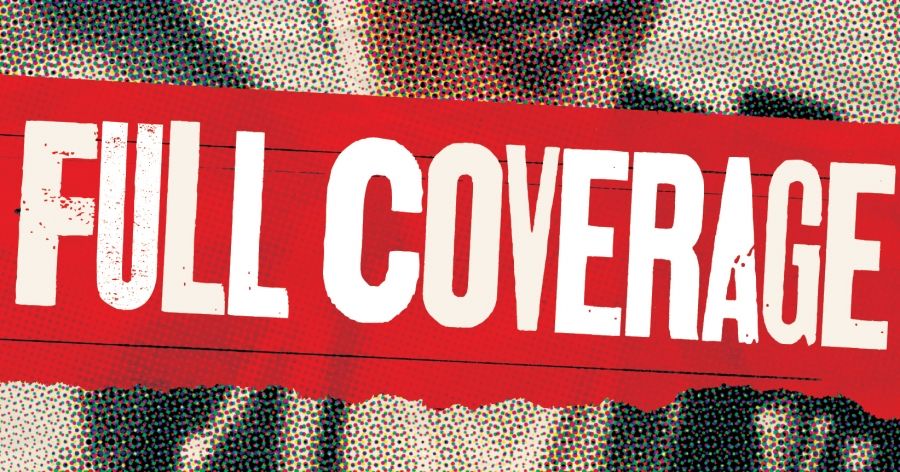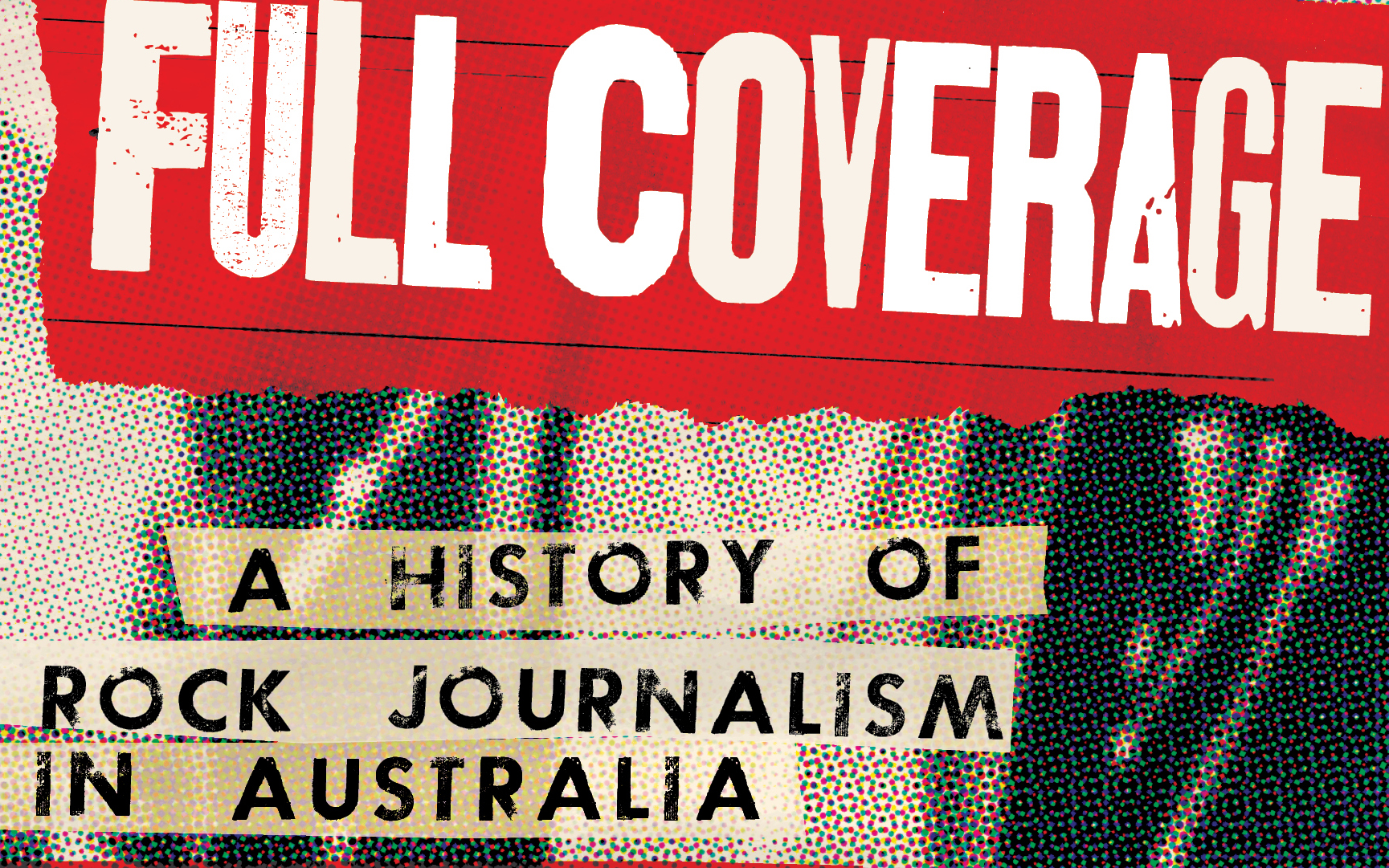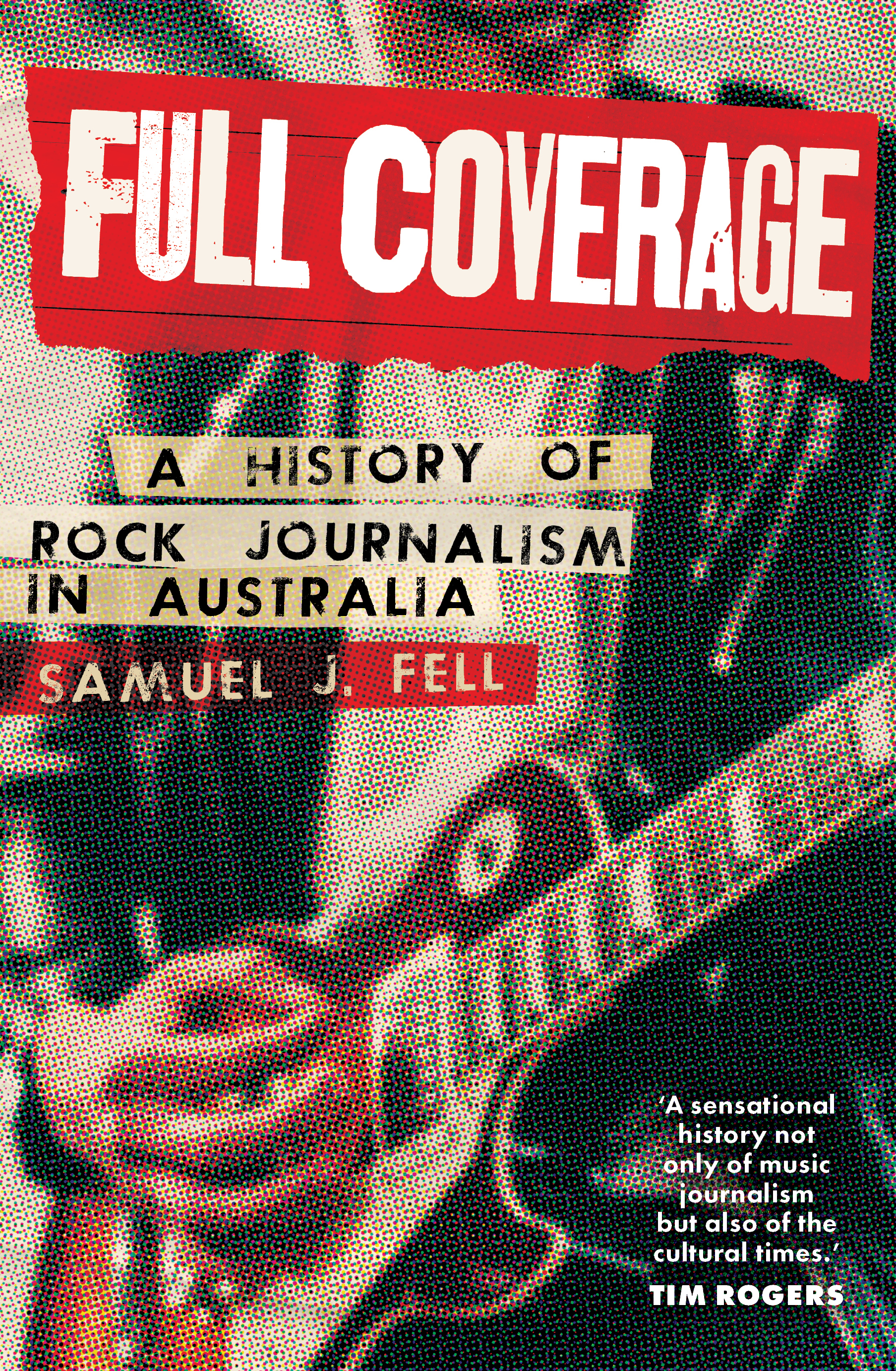
- Free Article: No
- Contents Category: Music
- Review Article: Yes
- Article Title: Breaking loose
- Article Subtitle: Pioneering rock journalism
- Online Only: No
- Custom Highlight Text:
In the film Almost Famous (2000), director Cameron Crowe’s alter ego, fifteen-year-old William Miller, doggedly pursues his dream of breaking into rock journalism. He cold-calls legendary music journalist Lester Bangs (marvellously played by a dishevelled Philip Seymour Hoffman). Next thing we know, he is commissioned by Rolling Stone editor Ben Fong-Torres to head out on the road with fictitious band Stillwater to write a story that ends up on the cover of Rolling Stone. If only it were that easy.
- Featured Image (400px * 250px):

- Alt Tag (Featured Image): Des Cowley reviews 'Full Coverage: A history of rock journalism in Australia' by Samuel J. Fell
- Book 1 Title: Full Coverage
- Book 1 Subtitle: A history of rock journalism in Australia
- Book 1 Biblio: Monash University Press, $36.99 pb, 310 pp
- Book 1 Cover Small (400 x 600):

- Book 1 Cover (800 x 1200):

Any history of Australian rock music journalism, by necessity, begins with Go-Set, whose first issue appeared on 2 February 1966. It was a watershed moment, arriving less than two years after the Beatles took Melbourne (and the rest of the world) by storm. Fell’s book highlights the importance of student presses as a breeding ground for new music writing. Both Tony Schauble and Phillip Frazer, two of Go-Set’s founders, were co-editors of Monash University’s student paper Lot’s Wife when they first hatched the idea of a music magazine out of their share house in Malvern.
Schauble’s opening editorial set the tone for generational change: ‘Every one of you cats has felt the lash of the Oldies … Now’s the time to really break loose.’ Cringe-inducing, decidedly, but for once Australia got the jump on America: Jann Wenner and Ralph J. Gleason’s Rolling Stone would not appear until a year later, though RS would brandish a counter-cultural maturity to which Go-Set never really aspired. Frazer, who was just nineteen when Go-Set was founded, admits to aiming the magazine at thirteen-to-nineteen-year-olds, hardly a revolutionary endeavour.
Go-Set launched several high-profile careers, including those of writer Lily Brett and Ian ‘Molly’ Meldrum. What was called for, above all, was enthusiasm, and a talent for hustling. Brett landed her job by offering to work for free, while Meldrum just turned up and began sweeping the office floors. Soon after, Brett and photographer Colin Beard found themselves jetting to London, on a free round-the-world ticket, courtesy of British Airways. They landed in San Francisco in time for the Monterey Pop Festival, and sent back regular bulletins – interviews with musicians, updates on the latest hippie fashions – throughout their seven-month adventure. Australian readers, instead of waiting months for postal deliveries of UK magazines like Melody Maker, suddenly found themselves ahead of the curve.
Many of the stories surrounding Go-Set have since assumed mythical proportions, and Fell’s account by and large recycles the bare bones of this corpus. Once he arrives at the 1970s, however, he is, for the most part, in uncharted territory. The decade was kick-started by Michael Gudinski and Michael Browning’s Daily Planet (later Planet), launched in 1971. Though it proved to be short-lived, the magazine’s increased focus on rock music over pop, more aligned with Wenner’s Rolling Stone, helped sow the seeds of a genuine alternative music press.
In the lead-up to Gough Whitlam’s grand cultural shake-up, the lines between underground and music press were distinctly blurred, with magazines such as Revolution and Digger – featuring as much social commentary as music – briefly flourishing. They would provide much needed outlets for a crop of new writers, including Helen Garner. The period also spawned the Australian edition of Rolling Stone, which began life as a four-page insert in Phillip Frazer’s short-lived Revolution, before morphing, in January 1972, into a stand-alone magazine.
Hard to credit, but by the dawn of 1975, following Go-Set’s demise, Australia found itself, for the first time in a decade, without a dedicated music magazine (the sole survivor, Rolling Stone, was predominantly recycling pieces from its American counterpart). From these ill-fated ventures would emerge what Fell christens ‘the golden era’ of the rock press, beginning with Anthony O’Grady’s Rock Australia Magazine (RAM), launched in Sydney in March 1975. The magazine nurtured a pool of talented writers, emboldened by the new journalism of Hunter S. Thompson, and UK music journalists like Nick Kent. While advertising revenue was, at first, in short supply, O’Grady’s policy of commissioning long-form pieces paid off, breeding a generation of committed music journalists – many still with us – such as Stuart Coupe, Clinton Walker, Annie Burton, Glenn A. Baker, Jen Jewel Brown, Mark Mordue, and Andrew McMillan. What is more, they were paid – and handsomely – for their efforts.
Not content to be left behind, Melbourne hit back with Juke, founded by Ed Nimmervoll, appearing barely two months after RAM. After a few fumbles, it was taken over by Fairfax, ensuring both national circulation and long-term financial survival, but at the same time hastening the corporatisation of the music press. While arguments still rage as to which magazine had more cultural cachet, many writers took advantage of the good times, moonlighting for both.
Fell’s story of the rapid rise of the street press in the late 1980s and 1990s goes some way to mapping a field long mired in bibliographic turmoil, unsurprising given that most issues were destined for the recycling bin within days of publication. No one saw it coming: the idea of music magazines that were free to the public, funded by numerous cheap ads. Instead of requiring readers to visit their newsagent, street presses went to where readers already were: record stores, cafés, pubs, cinemas. As advertising money poured in, new titles sprang up, specialising in localised content, and exploiting mostly novice writers, who were paid little, if anything. The spectacular success of street magazines like Offbeat and Inpress spelt the end of the golden age of music journalism. Both RAM and Juke were gone by the early 1990s, though Tony Creswell’s Juice bucked the trend, appearing until 2003.
The good times, of course, could never last. The advertising dollars that street presses thrived on – particularly from the burgeoning dance scene – were slowly whittled away by the onset of digital media. Venues and bands simply took to Facebook and Instagram, targeting their own communities, cutting out the intermediary. As Fell notes, those few print music magazines that have survived, such as Rhythms and Guitar Australia, have done so by tailoring content to niche audiences, generally selling via subscription. As for the rest? The bulk of Australian music coverage now exists online, decentralised, driven by algorithms, a counterpart to today’s consumer-driven network of music streaming platforms.
Samuel J. Fell, ever the journalist, has largely drawn his account from interviews with editors, publishers, and writers. If archives exist for these publications, they are not mentioned. His book, pitched at a popular rather than an academic readership, would have been aided by an index and a separate checklist of key magazines, and dates. Despite these blemishes, Fell’s history of the Australian rock music press makes for riveting reading, a tale in which raw passion and financial imperatives are fractiously intertwined, yet out of which flourished a thriving, independent culture of music journalism.


Comments powered by CComment